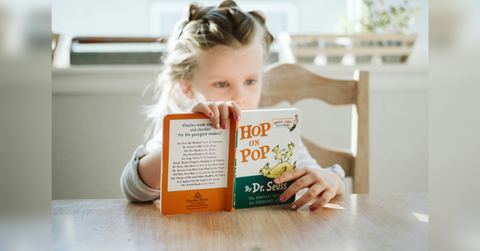 NEWS
NEWSScience of Reading: The Building Blocks of Learning Words

Sept. 4 2025, Published 1:39 a.m. ET
People often believe that reading occurs through sight. It is a visual process. The basis of this belief is how adults quickly recognize letters and words simply by seeing them. However, scientific studies demonstrate that young children learn alphabetic languages through sound. Of course, they use their visual systems. But they decode words after learning to convert letters into sounds, supported by the phonological or sound-processing system. If you want to help your child develop reading skills, focus on the alphabetic principle, phonemic awareness, and phonics knowledge. These fundamentals can boost your child’s reading ability and help them become a confident communicator, too.
For daily instructions, you can refer to decodable books. You can use these texts to strengthen their letter-sound knowledge and phonemic awareness. Introduce them to the concept of the alphabetic principle first, before moving on to other areas. The alphabetic principle indicates that written language is nothing but a symbol of sounds - /ie/ sound in ‘shine’ or /s/ in ‘sun.’With this basic understanding, they can be introduced to letter-sound and word-sound relationships through decodable texts.
Letter-Sound Relationships
Giving lessons on the relationship between letters and their corresponding sounds can help develop children's reading skills. The child should be able to recognize that the letter ‘s’ sounds /s/ and not /m/ or /i/. When these concepts are clear, the child will know that the word ‘shine’ starts with the sound /s/. Through decodable readers, you can increase your child’s knowledge about graphemes and phonemes. They will also learn that there can be more than one grapheme in a phoneme. Think of the/oa/ sound in words like boat, home, show, and toe. Children may need more time to learn everything. You should keep them engaged in reading practices and word-based activities. Give them systematic instructions on phonics.
Want OK! each day? Sign up here!
Phonemic Awareness
After the alphabetical principle and letter-sound relationships, you can teach phonemic awareness skills. The young readers need to recognize sounds in words. For example, your kid should know that the word ‘dog’ can be segmented into /d/ /o/ and /g/. Or, he should recognize that the word 'play' can be broken down into the sounds /p/, /l/, and /ay/. With the help of proper decodable texts, you can make your child aware of using written codes. They should know that ‘sh', 'i_e', and 'n' are distinctive sounds; yet, they can be phonemically blended to make the word "shine.”
Beginning readers don’t know this skill. They need your continuous support and guidance to acquire this knowledge. Based on their learning, they will eventually be able to segment and blend different words phonemically. They don’t need to memorize spellings. Instead, systematic lessons will help these teachings become ingrained in their minds. As a result, their word-reading fluency will improve.
If you want the child to become a confident reader, you should create an ideal instructional environment with phonics-based books. Many platforms sell high-end decodable readers. You can refer to them for help. These materials can be used to teach initial phonics information and phonemic awareness skills.


